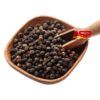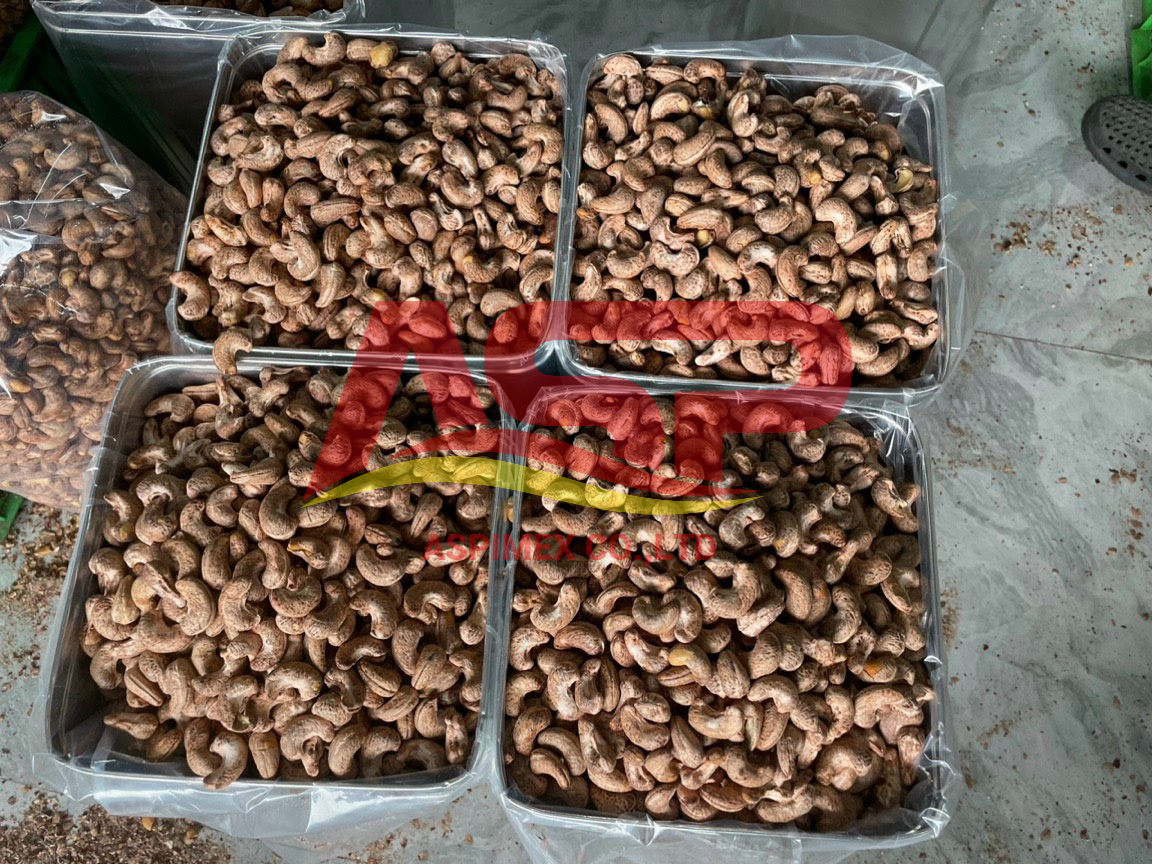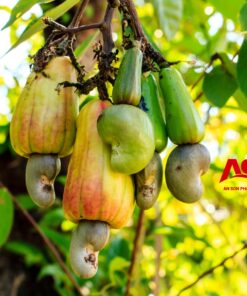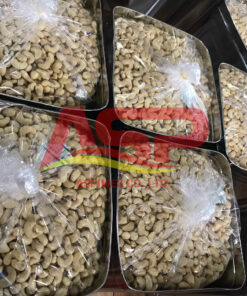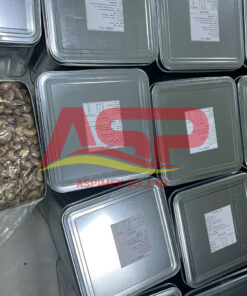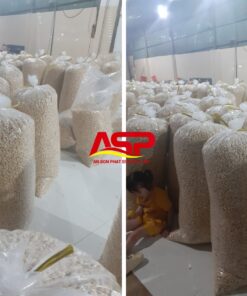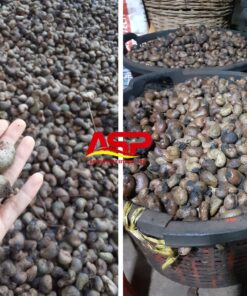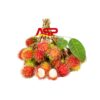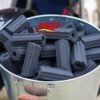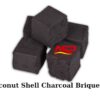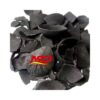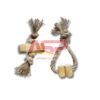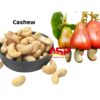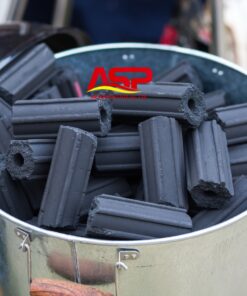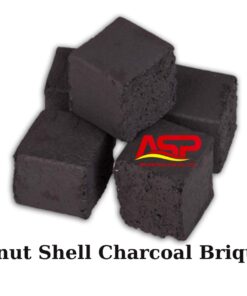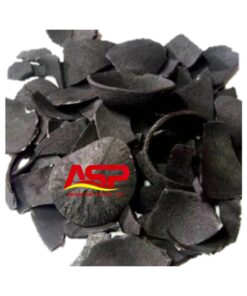Cashew Nuts
- Cashew ( scientific name : Anacardium occidentale L.; synonym : Anacardium curatellifolium ) is a perennial industrial plant belonging to the Mango family ( Anacardiaceae ). This tree is native to northeastern Brazil , where it is known in Portuguese as Caju (meaning “fruit”) or Cajueiro (“tree”). Today it is grown throughout tropical climates for its kernels for food processingFor most. In addition, it also produces valuable by-products such as cashew nut shell oil.

- The cashew seed is commonly considered a snack nut (cashew nut) eaten on its own, used in recipes, or processed into cashew cheese or cashew butter. Like the tree, the nut is often simply called a cashew. Cashew allergies are triggered by the proteins found in tree nuts, and cooking often does not remove or change these proteins.
- As well as the nut and fruit, the plant has several other uses. The shell of the cashew seed yields derivatives that can be used in many applications including lubricants, waterproofing, paints, and, starting in World War II, arms production. Cashew apple is a light reddish to yellow fruit, whose pulp and juice can be processed into a sweet, astringent fruit drink or fermented and distilled into liquor.
- The fruit of the cashew tree is an accessory fruit (sometimes called a pseudocarp or false fruit).What appears to be the fruit is an oval or pear-shaped structure, a hypocarpium, that develops from the pedicel and the receptacle of the cashew flower.
Distribution and habitat
- The species is native to Northeastern Brazil and Southeastern Venezuela, and later was distributed around the world in the 1500s by Portuguese explorers.Portuguese colonists in Brazil began exporting cashew nuts as early as the 1550s. The Portuguese took it to Goa, India between 1560 and 1565. From there, it spread throughout Southeast Asia and eventually Africa.

Cultivation
- The cashew tree is cultivated in the tropics between 25°N and 25°S, and is well-adapted to hot lowland areas with a pronounced dry season, where the mango and tamarind trees also thrive.The traditional cashew tree is tall (up to 14 m) and takes three years from planting before it starts production, and eight years before economic harvests can begin. More recent breeds, such as the dwarf cashew trees, are up to 6 m tall, and start producing after the first year, with economic yields after three years. The cashew nut yields for the traditional tree are about 0.25 metric tons per hectare, in contrast to over a ton per hectare for the dwarf variety. Grafting and other modern tree management technologies are used to further improve and sustain cashew nut yields in commercial orchards.
CLASSIFICATION OF CASHEW
- Vietnam’s cashew exports are classified by size and color, the most popular are WW240, WW320, WW450, WS
| Describe | English | Acronym | Symbol | Multiplier/kg | Multiplier/lb |
| 1. White | White | W | W 160 | 265-353 | 120 – 160 |
| 2. Gold | Scorched | S | W 180 | 355-395 | 161 – 180 |
| 3. Yellow gold | Second Scored | SS | W 210 | 440-465 | 200 – 210 |
| 4. Light melasma | Light Blemish | LB | W 240 | 440-465 | 200 – 210 |
| 5. Nam | Blemish | REMOVE | W 320 | 660-705 | 300 – 320 |
| 6. Dark Melasma | Dark Blemish | DB | W 450 | 880-990 | 400 – 450 |
| 7. Horizontal rupture | Butt | REMOVE | SW 240 | 485 – 530 | 220 – 240 |
| 8. Break through me | Blemish Butt | BB | SW 320 | 660 – 705 | 300 – 320 |
General requirements
- Cashew kernels must be properly dried, have a characteristic shape, graded or processed in grades. Cashew nut shell oil must not be contaminated, the percentage of kernels left with silk shell must not exceed 1.5% by weight. The diameter of the silk shell fragments still attached to the aggregate core should not exceed 2 mm.
- Cashew kernels must be free from live pests, insect corpses, moldy grips, no contamination visible to the naked eye or use a hand-held magnifying glass with a magnification of about 10 times, in case of necessity. Cashew kernels must have a natural smell, must not have an oily smell or other strange odors.
- The moisture content of cashew kernels should not be more than 5% by weight.
- Each grade of cashew kernels must not mix more than 5% of the adjacent lower grade kernels, by weight, and not more than 5% of kernels broken when packed, calculated by weight.
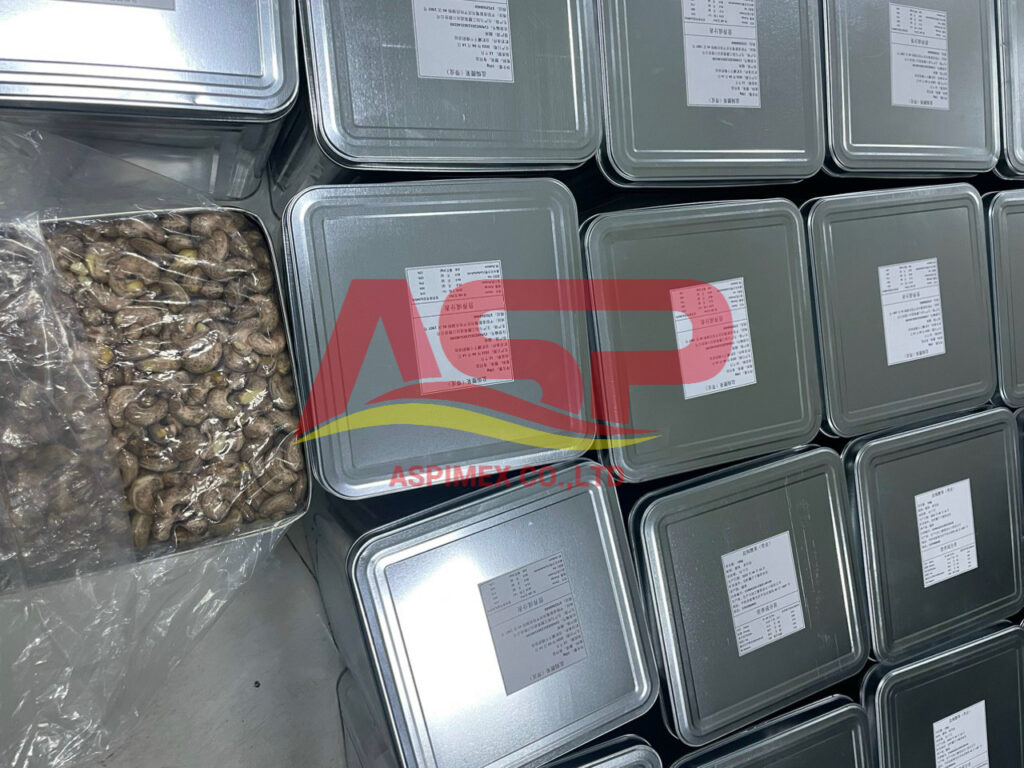
Nutrition
- Raw cashews are 5% water, 30% carbohydrates, 44% fat, and 18% protein (table). In a 100-gram reference amount, raw cashews provide 553 kilocalories, 67% of the Daily Value (DV) in total fats, 36% DV of protein, 13% DV of dietary fiber and 11% DV of carbohydrates. Cashews are rich sources (20% or more of the DV) of dietary minerals, including particularly copper, manganese, phosphorus, and magnesium (79–110% DV), and of thiamin, vitamin B6 and vitamin K (32–37% DV). Iron, potassium, zinc, and selenium are present in significant content (14–61% DV) (table). Cashews (100 g, raw) contain 113 milligrams (1.74 gr) of beta-sitosterol
Nut And Shell
- Cashews are commonly used in South Asian cuisine, whole for garnishing sweets or curries, or ground into a paste that forms a base of sauces for curries , or some sweets . It is also used in powdered form in the preparation of several Indian sweets and desserts. In Goan cuisine, both roasted and raw kernels are used whole for making curries and sweets. Cashews are also used in Vietnam ,Thailand and Chinese cuisines, generally in whole form. In the Philippines, cashew is a known product of Antipolo, and is eaten with suman.
Nut oil
- Cashew nut oil is a dark yellow oil derived from pressing the cashew nuts (typically from lower value broken chunks created accidentally during processing), and is used for cooking or as a salad dressing. The highest quality oil is produced from a single cold pressing.

Shell oil
- Cashew nutshell liquid or cashew shell oil is a natural resin with a yellowish sheen found in the honeycomb structure of the cashew nutshell, and is a byproduct of processing cashew nuts. It should not be confused with the edible cashew nut oil, as it is a strong irritant. It is therefore a danger in small-scale processing of the shells, but is a raw material having multiple possible uses It is used in tropical folk medicine and for anti-termite treatment of timber.
Animal feed
- Discarded cashew nuts unfit for human consumption, alongside the residues of oil extraction from cashew kernels, can be used to feed livestock. Animals can also eat the leaves of cashew tre

